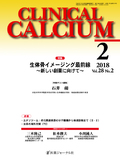Japanese
English
- 有料閲覧
- Abstract 文献概要
- 1ページ目 Look Inside
- 参考文献 Reference
二光子励起顕微鏡を用いた蛍光イメージング技術が発達し,生体内で様々な発生過程や病態における様々な細胞の動態をin vivoで観察することができるようになってきた。この観察のためには生体内の細胞を生きたままの状態で特異的に蛍光標識する必要がある。その方法は遺伝子操作,化学蛍光プローブや蛍光標識抗体などが用いられる。本稿では,細胞特異的に内因性に蛍光タンパク質を発現させる遺伝子改変マウス(レポーターマウス)の作出法について解説する。マウスの発生工学技術やバイオリソースの現状から,トランスジェニック法,ノックイン法そしてCre/loxPの組み換え法,CRISPR/Cas9法によるゲノム編集がレポーターマウスの作出方法として挙げられる。これらの方法の特徴とその応用の可能性について解説する。
Fluorescence imaging technology using two-photon excitation microscopy has been developed and utilized to observe cell dynamics in various developmental processes and pathological conditions in vivo. This technology is absolutely dependent on the fluorescent labelling technique of specific cells in a living state in vivo using various methods such as genetic engineering, chemiluminescent probes or fluorescent-conjugated antibodies. In this article, we demonstrate the methods of genetic engineering, particularly how to generate a genetically modified mouse(reporter mouse)that expresses fluorescent protein endogenously in the specific cells. In consideration of mouse genetic engineering technologies and the current state of bioresources, we describe the transgenic method, the knock-in method, the Cre/loxP-mediated recombination method and the genomic editing method by CRISPR/Cas9 system that have been used widely for generation of reporter mice. Among these methods, it is important to carefully select the suitable method according to the research purpose. We would like to compare the methods comprehensively.



